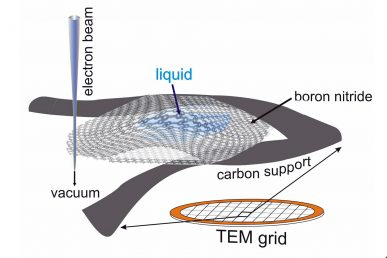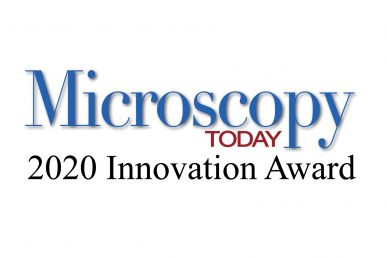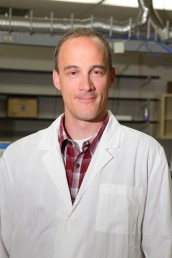UIC physicist earns innovation award from Microscopy Today
Labeling and identification of isotopes has become a crucial tool for studying biological activity and ionic diffusion in nearly all aspects of materials science and bioengineering.
In two recently published studies, University of Illinois Chicago physicist Robert Klie and colleagues from Oak Ridge National Laboratory and Nion Company developed and demonstrated ultra high-resolution electron energy-loss spectroscopy in an electron microscope with isotopes sensitivity in solid and liquid samples.
Their groundbreaking approach in high-resolution electron energy loss spectroscopy has been judged to be one of the 10 best microscopy innovations in the 2020 Microscopy Today Innovation Award competition.
The award was announced Aug. 4 during the 2020 Microscopy & Microanalysis virtual meeting. Descriptions of the winning products and methods will be published in the print and digital editions of the September issue of Microscopy Today, the official magazine of the Microscopy Society of America.
“Our approach now provides scientists and engineers with unprecedented spatial resolution and elemental sensitivity to locate and track the motion of isotopes in both liquid, biological and solid-state materials,” said Klie, UIC professor of physics.

The method of using vibrational spectroscopy in an electron microscope is the first demonstration that the location of common isotopes, for example of hydrogen, carbon or oxygen, can be determined in either a liquid or solid samples.
A transmission electron microscope, or TEM, such as the one located in the Research Resources Center at UIC, can commonly image matter at the atomic scale. However, it has so far not been possible to identify the presence, location or concentration of isotopes in any materials using TEM.
Klie said isotopes are often used to determine the age of a sample, determine the mobility of atoms inside a structure or to label biological materials, so the approach he and his colleagues developed will now enable such studies, while achieving near atomic-resolution in a TEM.
“We have demonstrated that a single cell or liquid droplet is sufficient to quantify the desired isotope effects using our approach, while other commonly used isotope tracking approaches require substantially larger amount of samples, or destroy the sample in the characterization process,” Klie said.
The research is supported by the U.S. Department of Energy’s Office of Science User Facilities.
Members of the project research team include Jacob Jokisaari, a former UIC postdoctoral researcher in physics; Juan-Carlos Idrobo and Jordan Hachtel of Oak Ridge National Laboratory; and Ondrej Krivanek of Nion Company.


